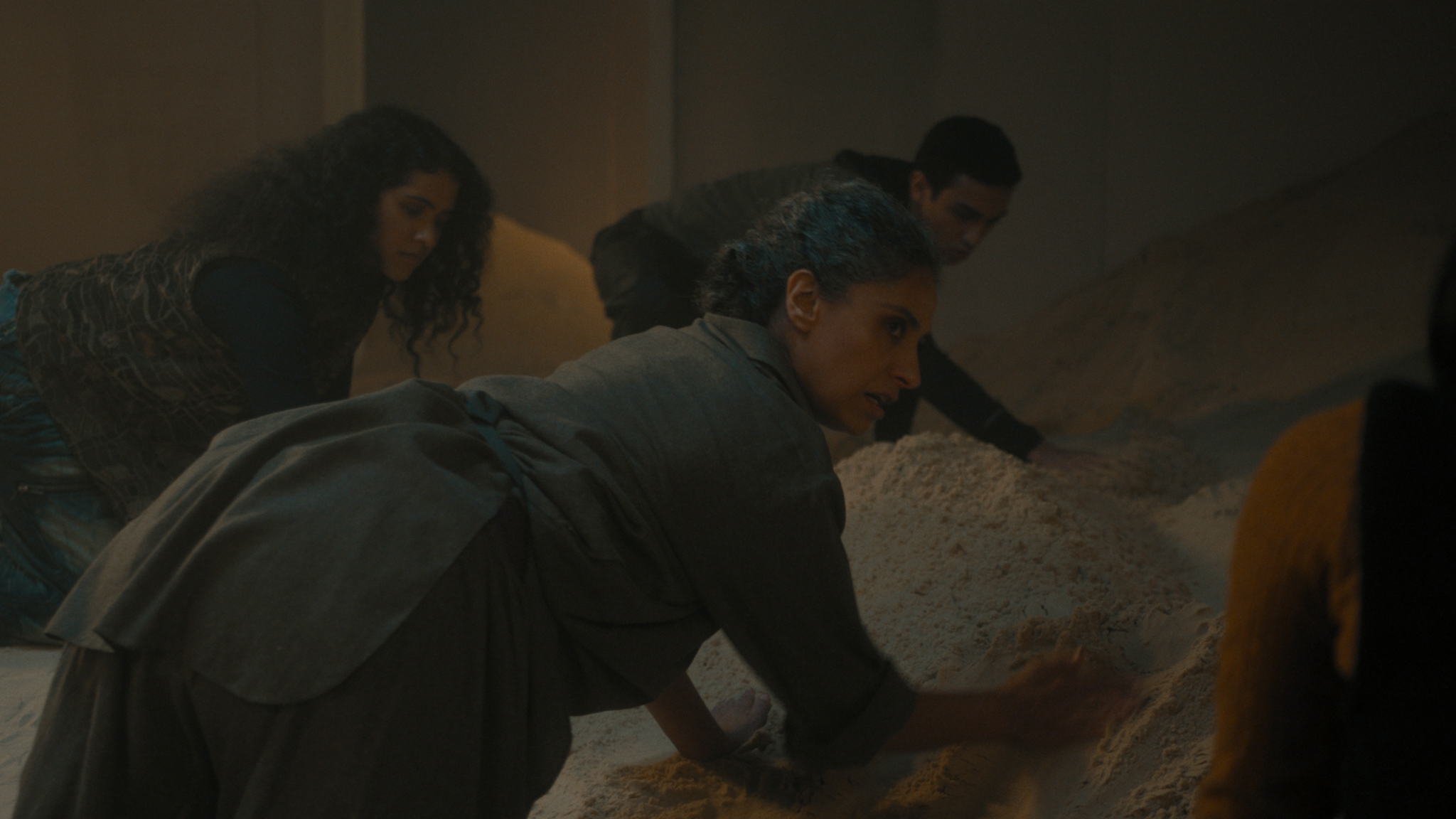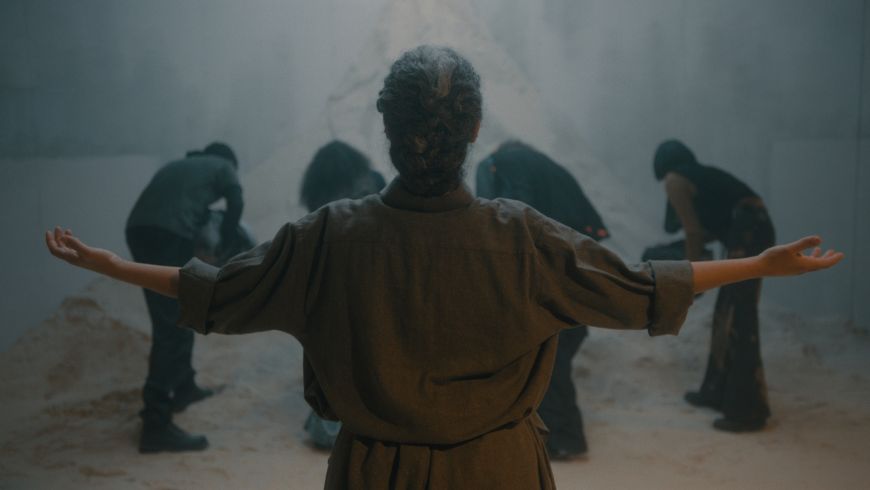“A fire broke out backstage in a theatre. The clown came out to warn the public; they thought it was a joke and applauded. He repeated it; the acclaim was even greater. I think that’s just how the world will come to an end: to general applause from wits who believe it’s a joke.” Kierkegaard [1]
In Kierkegaard’s well-known aphorism, we are presented a picture of ourselves as audience to the philosopher’s exhortations: we laugh at the clown/philosopher’s increasingly frenzied efforts to get us to leave, believing the gestures to be just a performance. Our language, our rituals and above all our sense of the staging of the world we live in – its mediation, its artifice and its hyperreality – have obscured for us, seemingly permanently, any sense of a reality beyond the performance in the theatre. So, Kierkegaard tells us, will we die.
Jean Baudrillard, that other great pessimist and ironist repeats this prognosis of species-death in his own claim that history as such – as a sequence of events with causes and effects – has ended decisively in our time, in the time when accelerated and intensified communication through media effectively replaces that which it was once seen to be simulating. In a chapter called ‘Maleficent Ecology’ in The Illusion of the End, Baudrillard proposes that it is our inability to encounter the real itself which leads us to confer subjecthood on ‘Nature’. What was once an object to the subject that was man, is now a subject unto itself; nostalgic perhaps for a better, Edenic past, hoping for a new relationship with man. Yet in this new ‘natural contract’, in this revised subject-subject relation, we merely imagine a kind of benign tendency to homeostasis and coexistence – as if, in giving nature its ‘natural’ rights, we are freed from its maleficence and our own. It is only in the staged sterility of experimental biospheres, expurgated of viruses and deadly organisms that such a community of nature can be found, where existence is predicated on the survival of all species.
And yet.
In the one hundred and fifty or so years between the writing of these two ideas, is it in fact history that has ended? In a surfeit of the production and consumption of intelligence, as Kirkegaard claimed in “The Present Age”, or in Baudrillard’s notion of a suffocating hyperreality from which no event can escape? Or is it philosophy itself that is endlessly rehearsing its own end as a mode of thought that is no longer on the side of action, suffused instead in reflection and irony?

Reman Sadani envisages a city enveloped by a cloud of dust that has appeared from an unknown or distant place, an unseen desert. It is not an accident that it is dust that has travelled here, dust that is exacting a kind of revenge on the city: again, it is Baudrillard who reminds us that the act of building motorways, hypermarkets and metropolises makes a desert out of everything around it. The desert is the real that is untraversable, unmappable. This is the desert of the European or colonial imagination, of course: unmarked, non-place, un-experiencable as opposed to the lived terrain of the desert-dweller, the Bedouin. But in Sadani’s world, this constitutive outside has returned (as the real, perhaps) as a contagion. The inhabitants, their vision suffocated by these invading particles, naturalise the event of their arrival. As a character’s voice tell us:
“None of us knew when the blue skies disappeared exactly.”
What was once an event now becomes the horizon itself, obscuring its own contingency – it becomes natural, the world as all that can be the case. How to exit this world, governed or dreamed in this way? Is it in a moment of loss of faith that these horizons crumble? Is it in seeing a sky that is now obscured, making offerings of sand? Or is it, as Sadani suggests, in a certain kind of refusal of the hopes given to one?
The young people of the city follow the rituals prescribed by an older, charismatic visionary: a kind of expiation or offering that requires them to gather the dust, build dunes out of it repeatedly and patiently, until the way to the sky appears. In this way, they are promised, the foretold event – when a group of these young people will find a way to the sky –
will arrive. It is this arrival and the rituals that mark its delay, that measure out its imminent presence in repeatable actions, that show this to be a kind of messianic time. This temporality, itself a kind of end of history, is fundamental to both Judeo-Christian and Islamic eschatologies and their linked political communities. It produces the linear historical time that Baudrillard, amongst others, seeks to expose as a foundational myth of contemporary civilisation. What this messianic time promises is nothing more than direction itself, a movement towards something obscured in the future, that is given shape by the memory of something now vanished: an age of miracles, the city of the prophet, the original community, enchantment, unalienated life, the blue sky.
There are two figures on this stage, in communion and then in conflict with each other: the older figures of experience, who carry prophecies, hold on to traditions and guide the young; and the young themselves, indoctrinated by faith, enchanted by the authority of wisdom. But the rituals of dust-gathering produce a state of endless deferral, where the young followers of the elder Bassima cannot imagine themselves as the young who will find the way to the sky: they must pray instead for the arrival of some others like them. Like academic radicals, perhaps, they busy themselves in creating the conditions for the coming revolution, paving the way for its progress. As one of the characters in the film asks:
“Are we the promise or the sacrifice?”
Questioning their place in this vision already opens up a chasm between the tradition as foundational political myth and the community that it seeks to generate. As Jean-Luc Nancy points out in his essay “Myth Interrupted”:
“The phrase “myth is a myth” harbours simultaneously and in the same thought a disabused irony (“foundation is a fiction”) and an onto-poeticological affirmation (“fiction is a foundation”). This is why myth is interrupted. It is interrupted by its myth.” [2]

Eventually, the dust-gatherers collectively lose faith in their leader and her visions, abandon their labours and walk out. Crucially what they walk out to is far less important for this allegory than what they walk out from. It is the moment of loss of faith, and the ensuing collective decision to abandon a community that lies at the heart of this narrative. Can we imagine here, with Sadani, a hope for the possibility of a collectivity that is not a community? That is, instead, a temporary alliance forged in refusal (refusal “to be governed thusly,” in Foucault’s phrase)? A refusal to wait, to be characters on a stage that is the world?
The strange aphoristic speech of the characters, their way of speaking at and across each other, signal as well a certain alienation – but from what exactly are they made alien?
Alienation here is not from the product of one’s labour, or from an original Edenic community under a blue sky – it is alienation from a whole life and its horizons. But for Sadani’s youthful protagonists, alienation is not the problem they must confront, it is the myth of an unalienated time-to-come that burdens them and deprives them of their agency. This agency, in turn, is only arrived at once they have undergone the process of seeing the myth as a myth: of losing belief in their destiny. This process, naturally, cannot be willed, they have no agency here. It is in what follows, and in not replacing this disenchantment with another myth – the myth of the very ‘Absence of Myth’ in Bataille’s phrase – that a kind of temporary possibility of change might emerge, as an interruption or suspension.
My reading of Sadani’s film takes it as an allegory of the contemporary city and its ritual and symbolic labours. This allegorical city is contaminated by its virulent outside, by the desert’s dust, and its autoimmune response is the creation of an authoritarian, religious community that is formed around symbolic labour. The idea that the labour of industry alienates us from an originary essence – “getting and spending we lay waste our powers,” as Wordsworth laments – has deep roots in European Romanticism and its extended confrontation with scientific modernity. Critical theory, the philosopher Akeel Bilgrami has claimed, draws powerfully if uncomfortably from the long Romantic tradition in its stand against scientism and the excesses of calculative reason. The deep, rich, pessimism of Sadani’s work however, does not allow us the possibility of any sublime encounter with an outside, with nature, with irrationalism, with the Other, or of any reunion with a half-mythical sky. It is entirely possible after all, in the space of the film, that the sky as imagined now, never existed in the first place.
Many on the political left today can only invest hope in radical change brought about by unseen tectonic forces, in technological prometheanism, in catastrophic transformations, in fully automated luxury communisms, in the aftermath of a devastating pandemic. The idea that we, as a community or species, can be led by history into a world without alienation, one without the multiple disenchantments of modernity, can be seen as a special kind of activity of hoping that denies or avoids the question of agency. We remain glued to our seats watching the clown perform, as the fire draws nearer. Thinking, theorising, philosophy: perhaps these too are rituals, like those of the dust-gatherers, of waiting and collectively hoping for a different life. Could an exit could be as simple as a walkout?
Endnotes
1 Søren Kierkegaard, Either/Or: A Fragment of Life, Trans. Alistair Hannay. Ed. Victor Eremita, Penguin Books (2004)
2 Jean-Luc Nancy, The Inoperative Community, Trans. Peter Connor, Lisa Garbus, Michael Holland, and Simona Sawhney, University of Minnesota Press (1991), p.55.
–––
Adnan Madani is an artist and writer with particular interests in philosophies of globalisation, religious/secular life and intercultural encounters. He is the author, with Jean-Paul Martinon, of the upcoming ‘Visual Cultures as World-Forming’ (Sternberg), and is a lecturer in Visual Cultures at Goldsmiths, University of London.
Reman Sadani's Walkout 1 (2020) was commissioned as part of the Jerwood/FVU Awards 2020: Hindsight, a collaboration between Jerwood Arts and Film and Video Umbrella.
